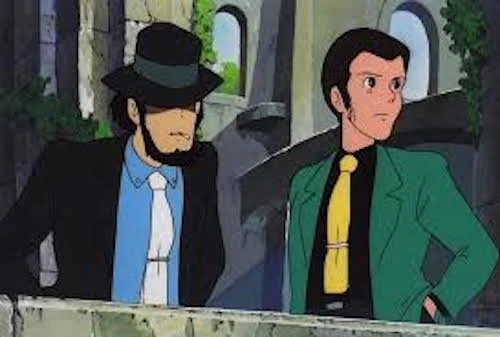Lupin III and his Cinematic Longevity
Lupin III: The First has already been out for a year over in Japan, but distributor GKIDS is currently posting promotional material for their own North American release of the same film. So, I suppose it’s as good of a time as ever to discuss it. This is a fully CGI remake of the titular character, the cast of misfits he associates with, and their heisting shenanigans. Lupin III (or Lupin the Third) has earned success time and time again, but it’s a rabbit hole that a lot of new viewers are finding is way deeper than they realized. When I was fixated on the television anime (hosted late at night by Adult Swim), I couldn’t believe the origins of this character or show. Monkey Punch (real name Kazuhiko Katō) created the Lupin III manga back in 1967, with fourteen volumes of his misadventures. This stemmed into shows, television specials, and a handful of feature films.
It’s fairly surprising that the character and his story has done so well, because of a few factors. Firstly, when I dove into Monkey Punch’s manga, it didn’t take me very long to realize just how problematic Lupin III — and some of the other characters — actually are. Even aside from the misogynistic over-sexualization of women (which felt kind of satirical in the animated versions, but I definitely had to reconsider all of this), there is a lot of utilization of rape as unjustifiable tropes (comedy, loose plot devices, and more). Monkey Punch obviously worked darkly, and Lupin III was a symbol of complete anarchy, but these are ideas that are virtually impossible to defend in 2020. I suppose that these faux-pas were overlooked because of the character’s popularity and the time he was created. Now, it’s a bit easier to dismiss this side of Lupin III, because we’ve been introduced to a variety of different reincarnations.
The Castle of Cagliostro.
In the way that Lupin III symbolizes uninhibited freedom, he was also sculpt-able by master storytellers. These include Sōji Yoshikawa, who directed the first film The Mystery of Mamo, Masayuki Ōzeki (The Fuma Conspiracy), and, obviously, Hayao Miyazaki, whose very first film was the second Lupin entry The Castle of Cagliostro. With crafters like Miyazaki at the helm, we get a Lupin III with somewhat of a different side. He’s still arrogant, horny and sarcastic, but it feels like he isn’t over the line (or quite as far as Monkey Punch’s original vision, anyway). I wouldn’t go as far to say that he has heart now, but the series felt like it had something a bit more to say. Then, there’s the American dubbing and releases of the shows and films, with the shows being arguably toned down. Not that I am condoning censorship, but there is a certain distance between an American audience of the ‘90s and ‘00s, and a late ‘60s, early ‘70s anime that can be content controlled to a degree. Even if the dubbing was done back in the day, current television distribution still determines what can be shown, so moments can easily be cut. At that point, you’re watching something quite different.
So, maybe that’s how we got to a 2020 GKIDS release of a film based on a character meant for adults who took part in ghastly events. What’s unique is that Lupin III feels almost like a spoof of our current day representation of James Bond (with his playboy charm and womanizing), Indiana Jones (the elaborate scheming), or Danny Ocean (the heist leadership); only the former is true, as he is based on James Bond and French literary character Arsène Lupin (also a robber). Either way, over fifty years after creation, audiences can interpret their own connections at this point, especially with so many iterations; it won’t make any of them particularly true, but they’re still real to these viewers. Besides, the many story tellers after Monkey Punch can have their own statements. When handled tastefully (well, as tastefully as possible), a carefree character like Lupin III can be molded in so many ways, so each heist is the same but different. Is Lupin III still problematic? Absolutely, but it’s difficult to tell which iterations utilize him as a satire of toxicity or an homage to toxic male characters. With the rave reviews Lupin III: The First has had since its initial Japan release, I can only hope this is a good version of the iconic anime character.
Andreas Babiolakis has a Masters degree in Film and Photography Preservation and Collections Management from Ryerson University, as well as a Bachelors degree in Cinema Studies from York University. His favourite times of year are the Criterion Collection flash sales and the annual Toronto International Film Festival.




